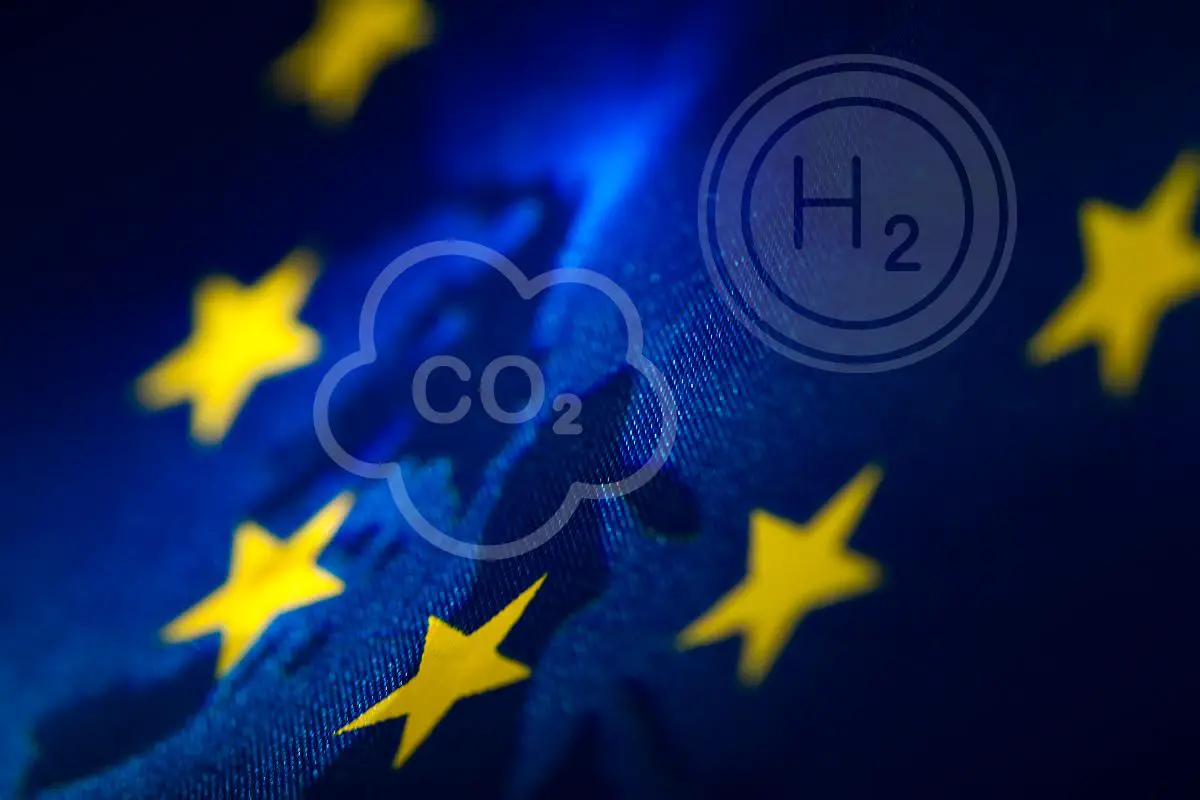
EU considers synthetic fuels combining CO2 and hydrogen
April 5, 2023EU energy experts are advocating the use of carbon dioxide (CO2) and hydrogen (H2) as crucial components for producing low-carbon synthetic fuels. While hydrogen is considered among the promising forms of clean energy, its use is not well suited for all applications. By combining CO2 and H2 in synthetic fuels, they become energy-dense and climate-neutral provided that green or low-carbon H2 is utilized. The European Commission has already been deliberating the use of CO2 as an industry feedstock, emphasizing its significance in the move towards clean energy away from fossil fuels.
Energy experts are looking to these two molecules for Europe’s low-carbon energy industry.
EU energy experts are pointing to carbon dioxide (CO2) and hydrogen (H2) as the key to future low-carbon synthetic fuels.
While hydrogen alone has been seen as highly promising, there remain areas where it isn’t ideally suited.
 Hydrogen is widely viewed as one of the most promising forms of clean energy for use in the transition away from fossil fuel. However, despite the hype, former Green party leader of France, Brice Lalonde, says that more options will be needed than just the one. Lalonde is currently the president of Équilibre des Énergies, an energy think tank.
Hydrogen is widely viewed as one of the most promising forms of clean energy for use in the transition away from fossil fuel. However, despite the hype, former Green party leader of France, Brice Lalonde, says that more options will be needed than just the one. Lalonde is currently the president of Équilibre des Énergies, an energy think tank.
“You can’t use it for everything,” said Lalonde when speaking at a recent EURACTIV event.
Though H2 has already reached a widespread level of production when it comes to plastic and fertilizer manufacturing as well as in chemical processes, the majority of hydrogen is currently made using processes powered by fossil fuel. Moreover, Lalonde expects that the demand for the gas will be limited, particularly at first.
Synthetic fuels provide additional options beyond battery electric, hydrogen and other popular alternatives.
“It has to probably be only used as a fuel for transportation,” with a focus toward aviation in particular, explained Lalonde, whose organization also includes members such as Total Energies and Airbus. He added for applications such as those, readily available CO2 would be vital. “The main interest of hydrogen is going to be as a component to mix with carbon.”

Best Transportation Sectors
By combining carbon dioxide and hydrogen to make synthetic fuels, the outcome is energy dense, making it appropriate for transportation sectors such as aviation and maritime shipping.
Importantly, the outcome can also be climate neutral. However, to achieve that goal, the H2 used to make it must be low-carbon or green, meaning that it is made either using nuclear power or renewable energy. It would also need to be made using CO2 produced using existing industrial processes or extracted from the air, explained Lalonde.
The European Commission has already been discussing carbon dioxide as an industry feedstock. In October 2022, the commission announced that it was working on a carbon capture and utilization (CCUS) strategy.
Join in the conversation – See Below: [forminator_poll id=”58027″]



 With over 15 years of reporting hydrogen news, we are your premier source for the latest updates and insights in hydrogen and renewable energy.
With over 15 years of reporting hydrogen news, we are your premier source for the latest updates and insights in hydrogen and renewable energy.
Is there a possibility that coal can be used if 100% recapture of emissions is controlled., or is there abundance of CO2 available economically now.
As we transition to a hydrogen economy, carbon capture will likely increase CO2 availability worldwide. Combining hydrogen and CO2 could be used to produce synthetic fuels, but they would be better used to produce graphene. Graphene made from hydrogen and CO2 will help achieve a sustainable hydrogen economy and more importantly solve climate warming. Graphene is currently or will be used for worldwide energy production. Graphene can greatly improve the energy efficiencies of hydrogen electrolysers, sodium-sulfur batteries, lithium-batteries, seawater filters, both perovskite and silicon solar cells, wind turbines, and many other required electrical grid components. Please read about this amazing product at Graphene-Info.com. Recent research advances have shown how this product offers a path to endless possibilities.